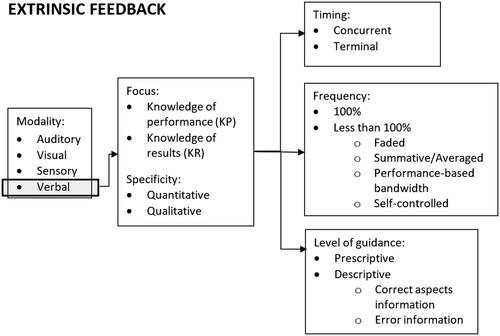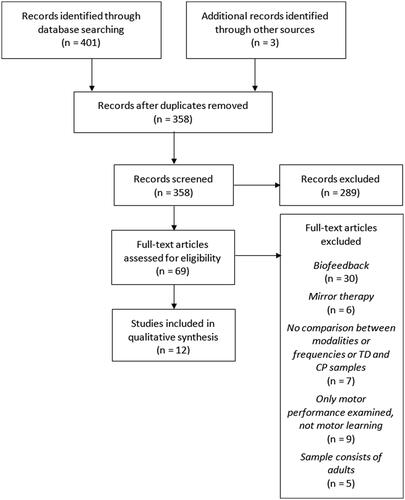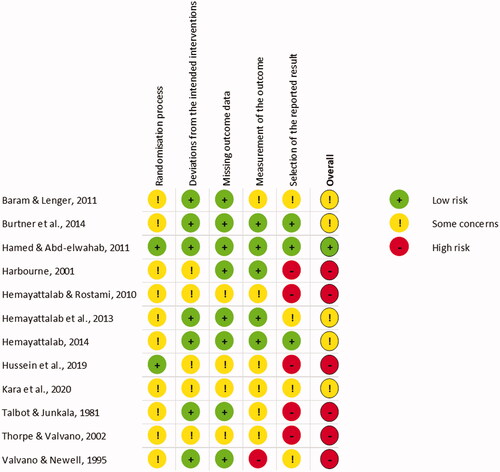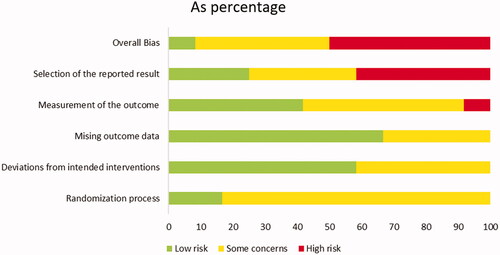Figures & data
Figure 1. Visual display of different forms of extrinsic feedback.

Figure 2. Flow chart depicting the process of inclusion of studies.

Table 1. Extracted details of the included studies applying knowledge of results feedback.
Table 2. Extracted details of the included studies applying knowledge of performance feedback.
Figure 3. Results of risk-of-bias assessment for each study. Green = low risk of bias; red = high risk of bias; yellow = some concerns.

Figure 4. Results of risk-of-bias assessment per domain. Green = low risk of bias; red = high risk of bias; yellow = some concerns.

